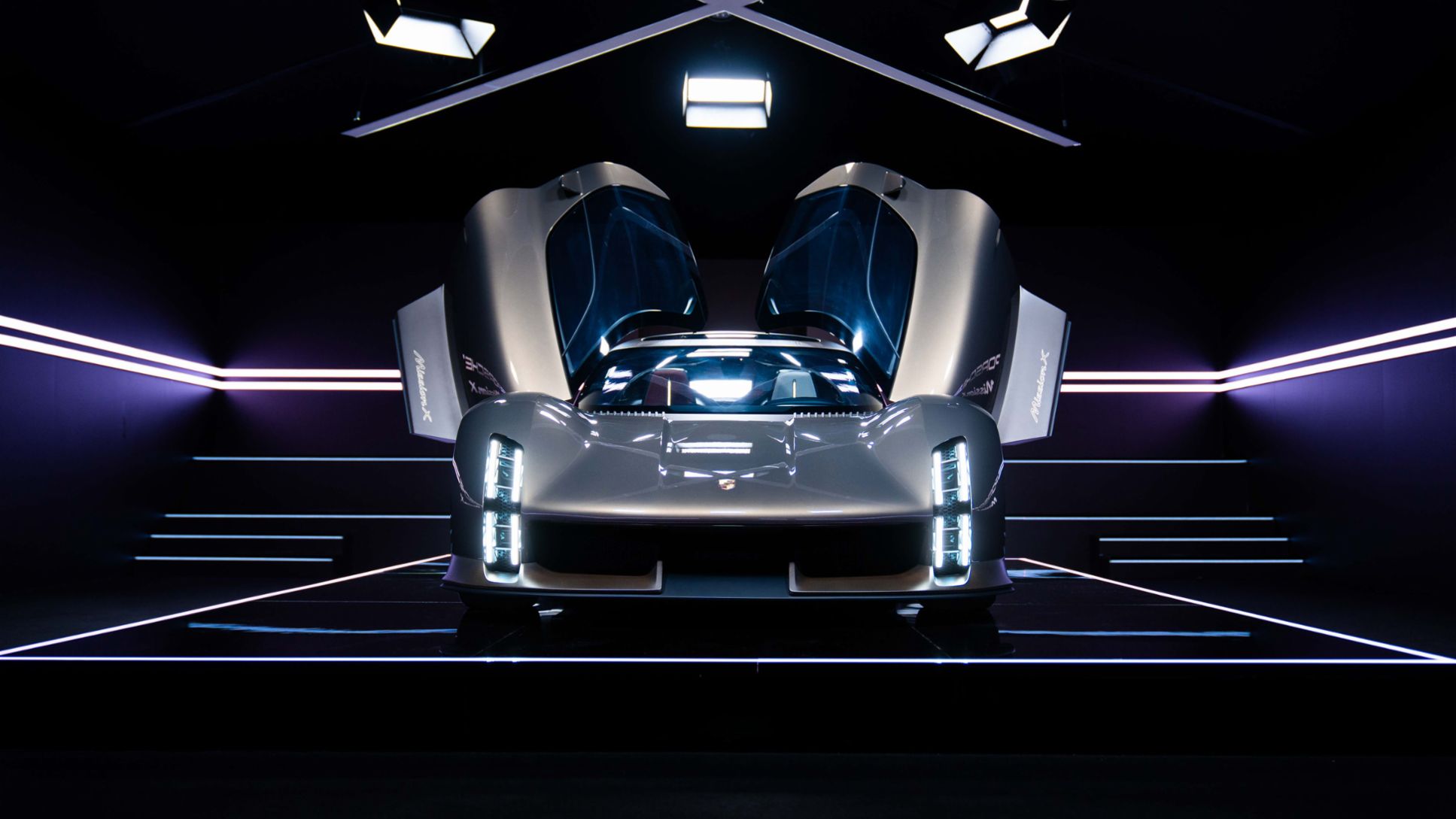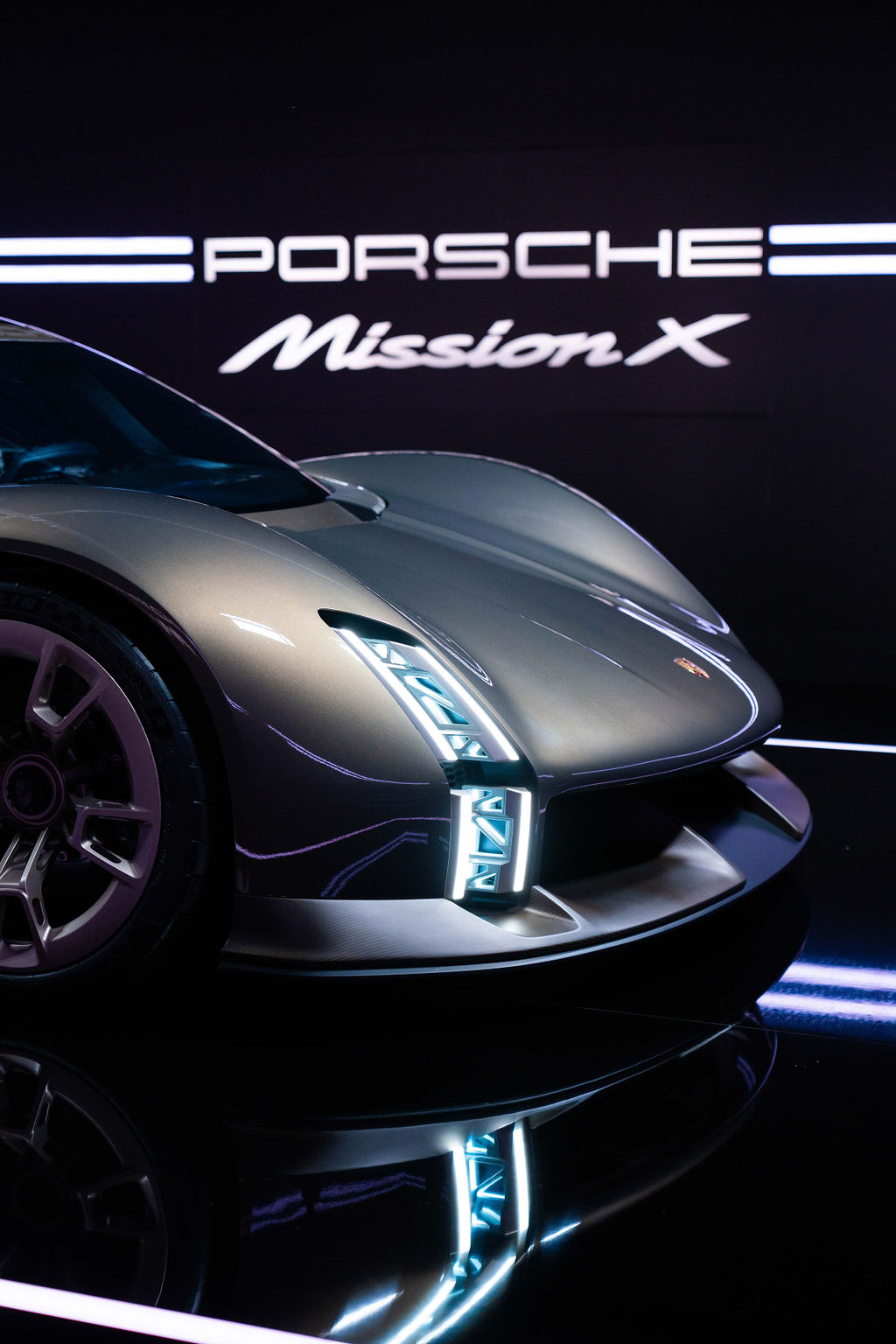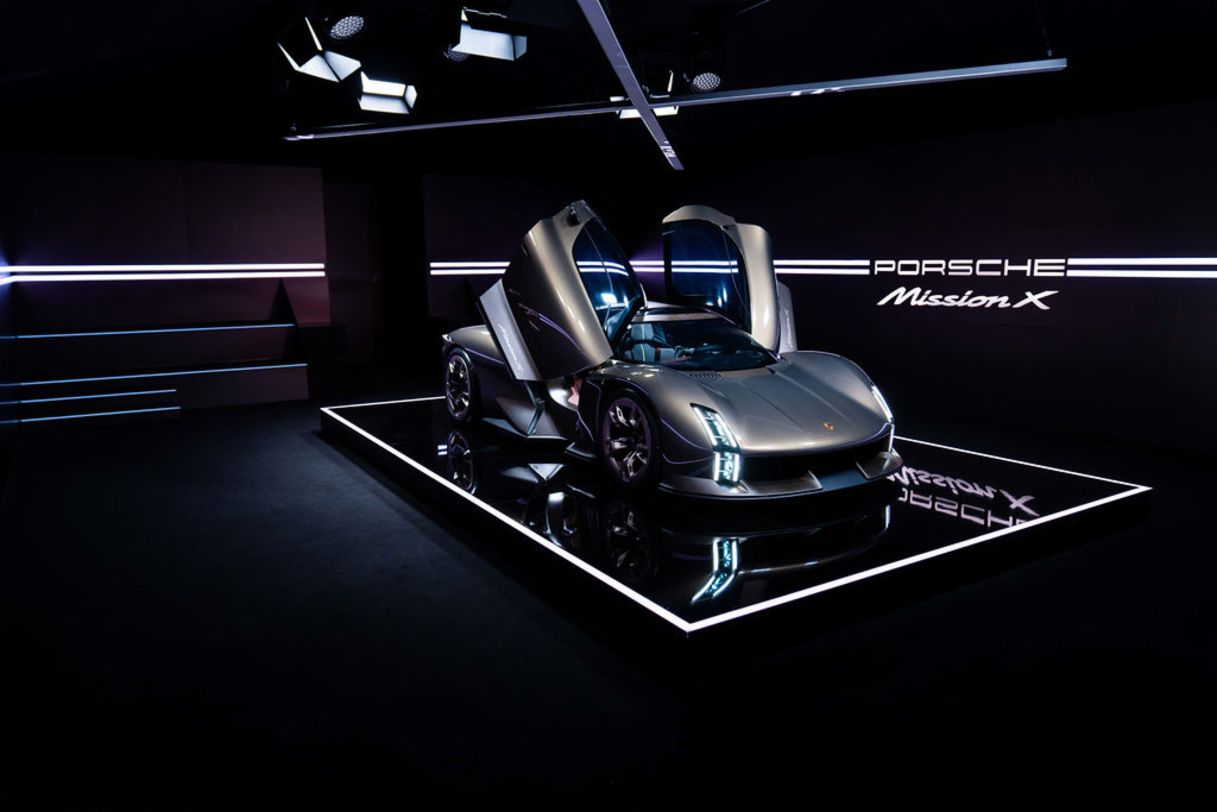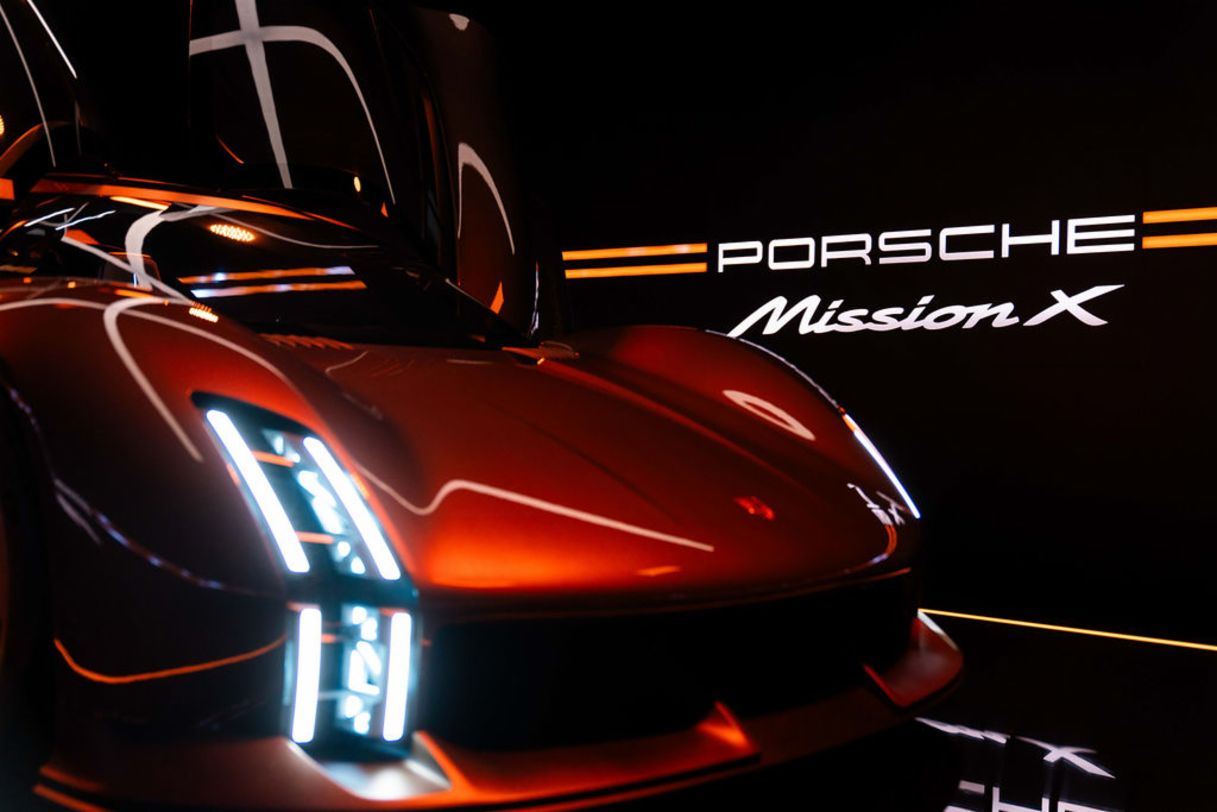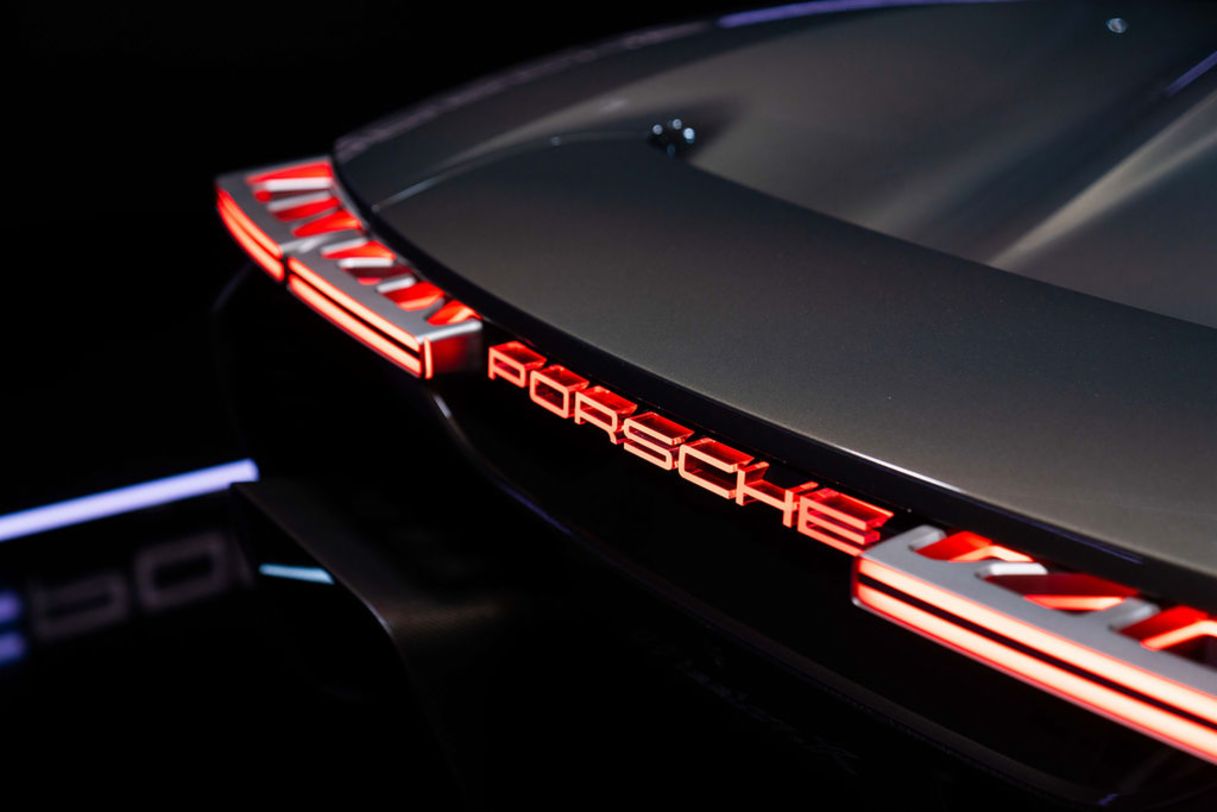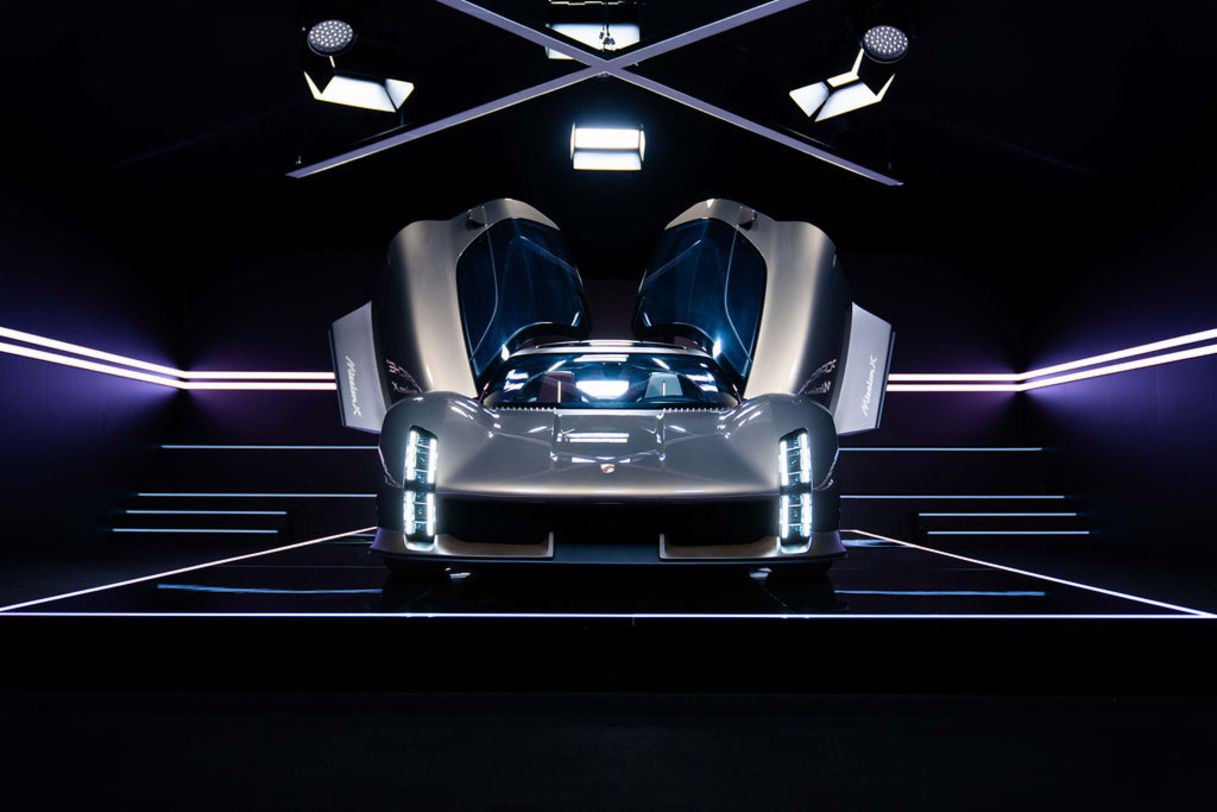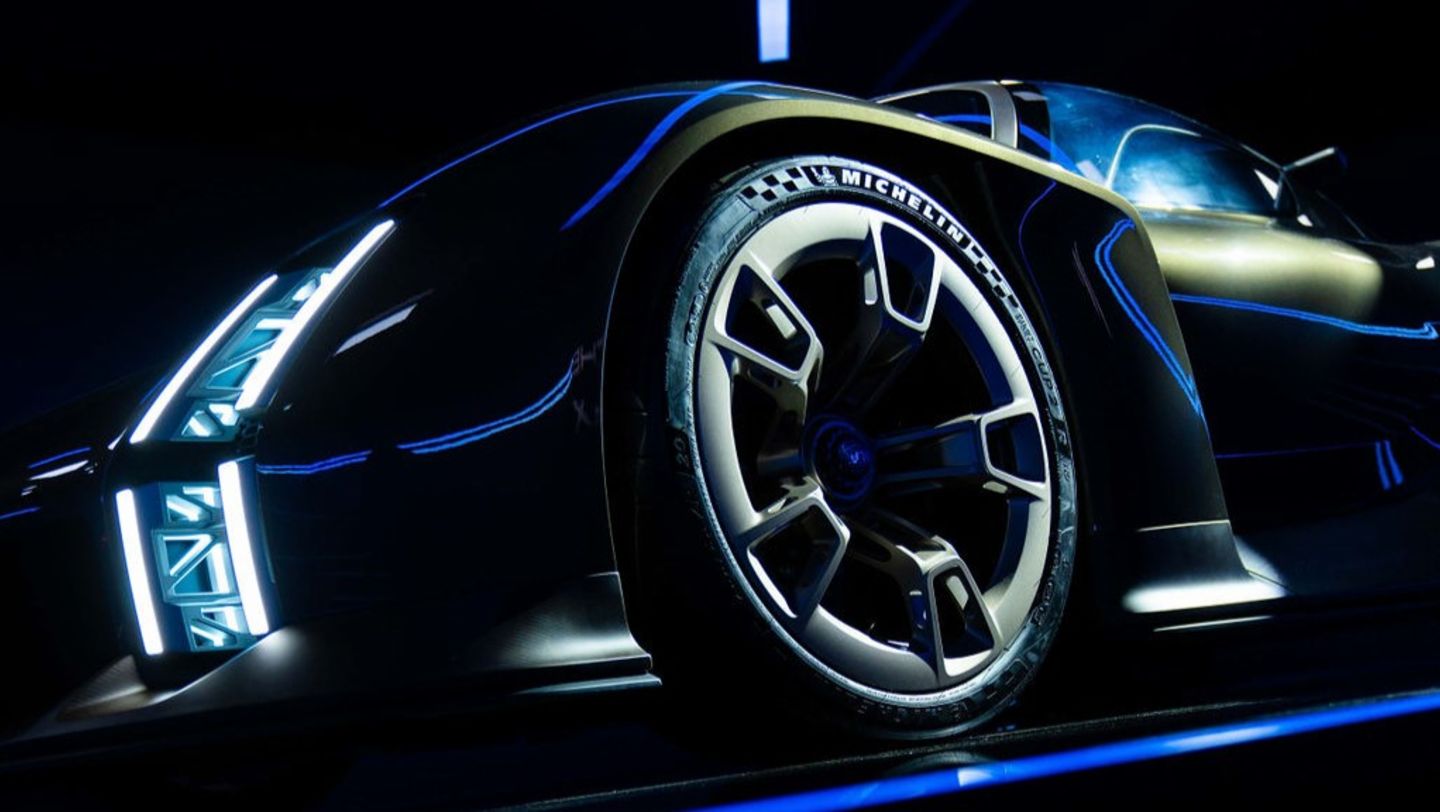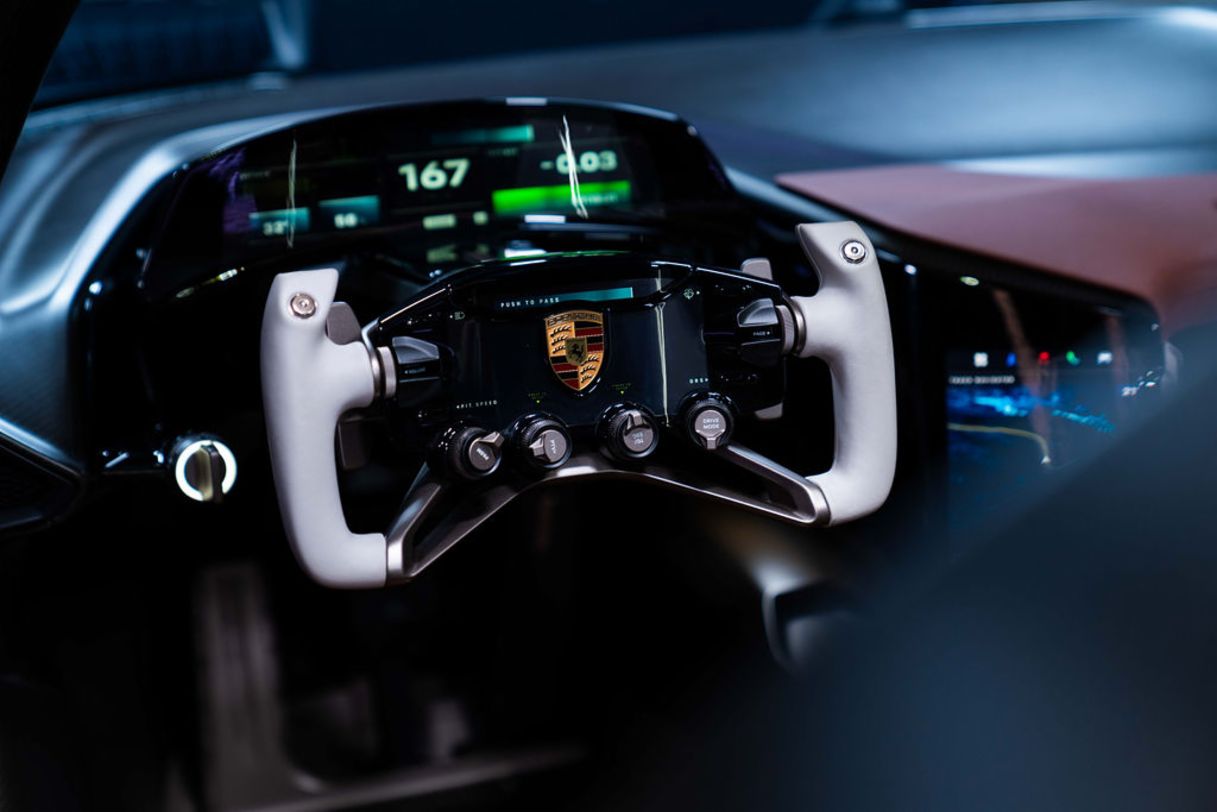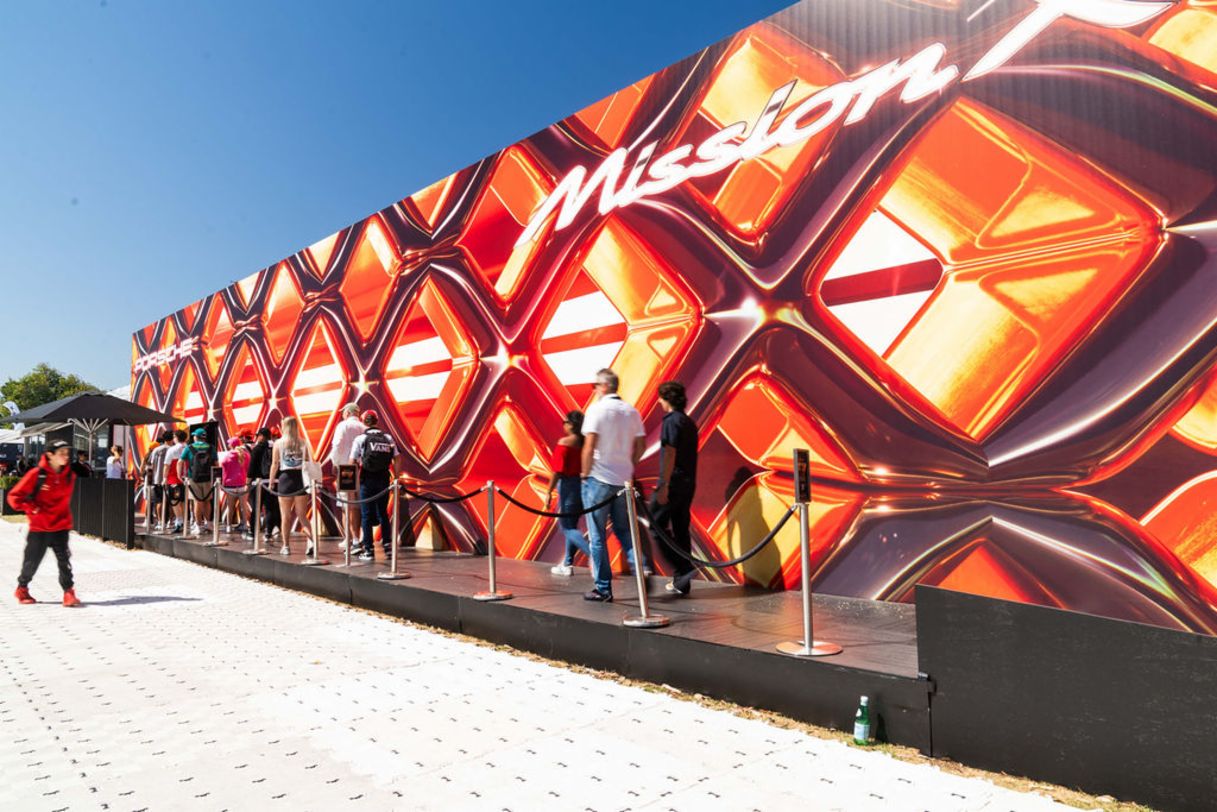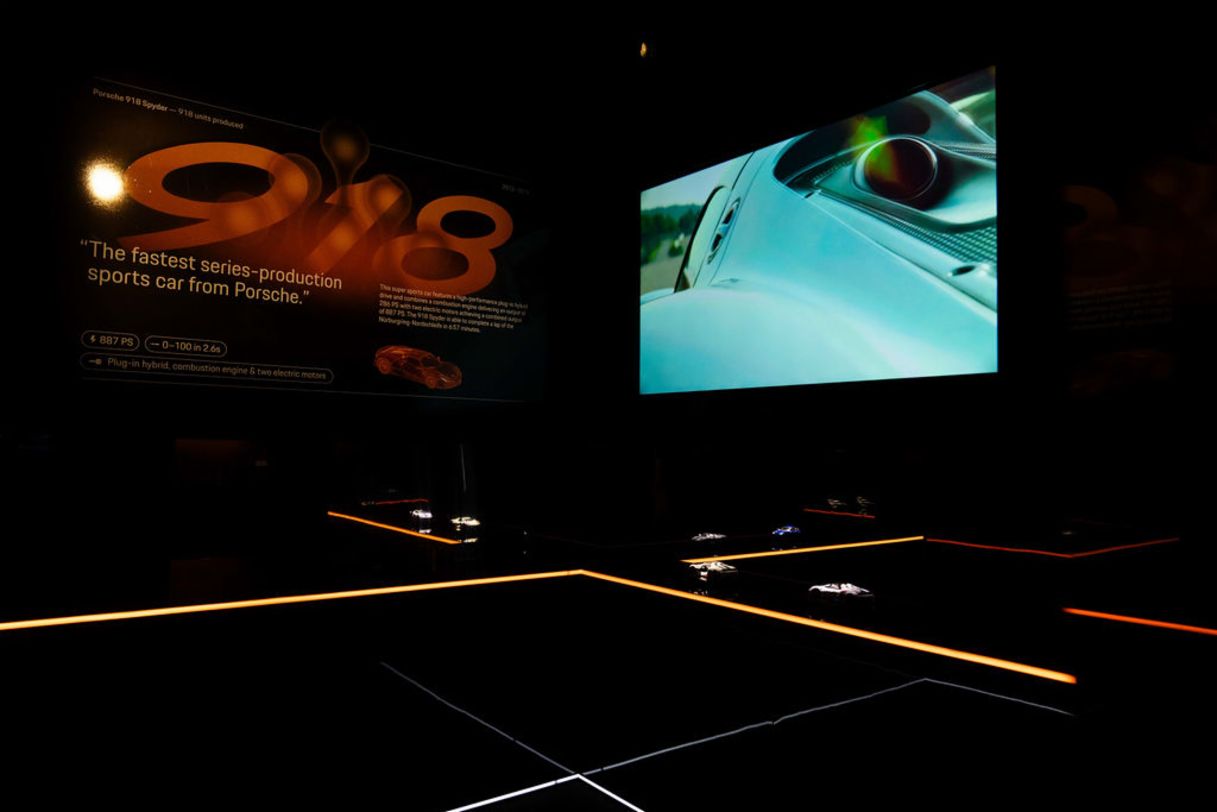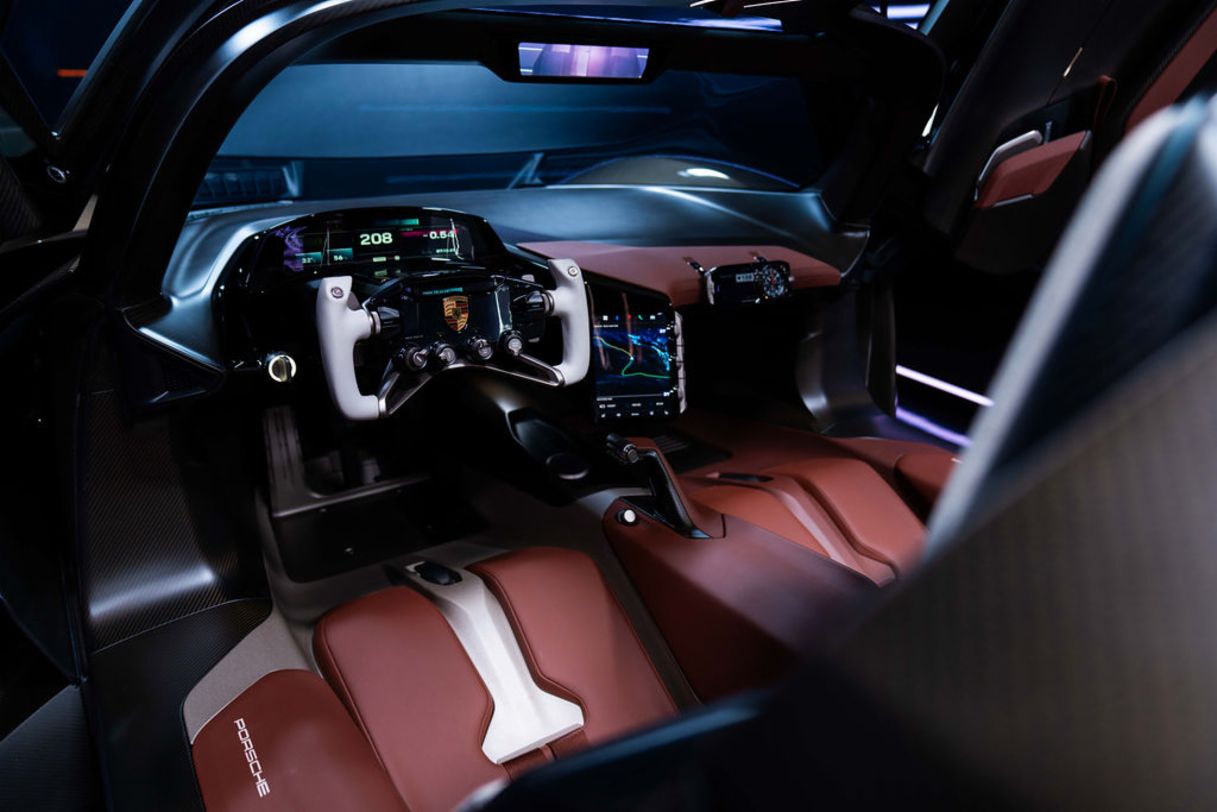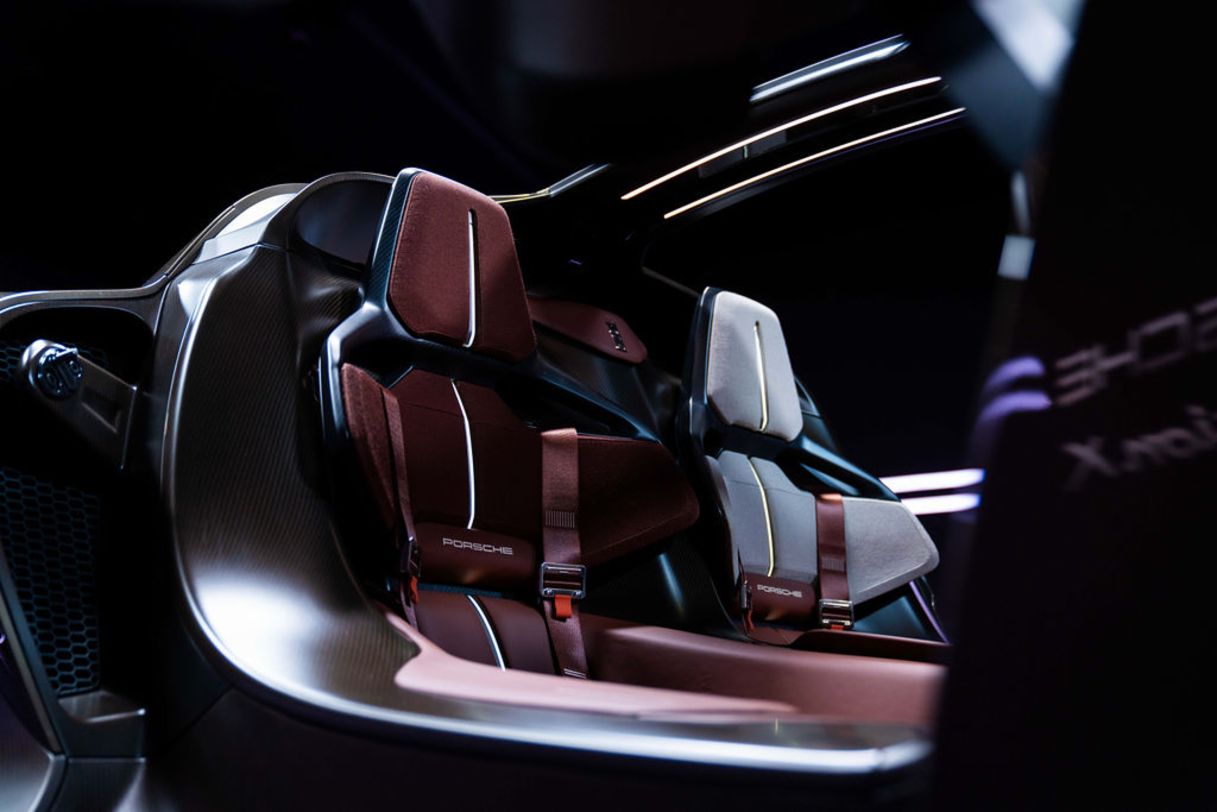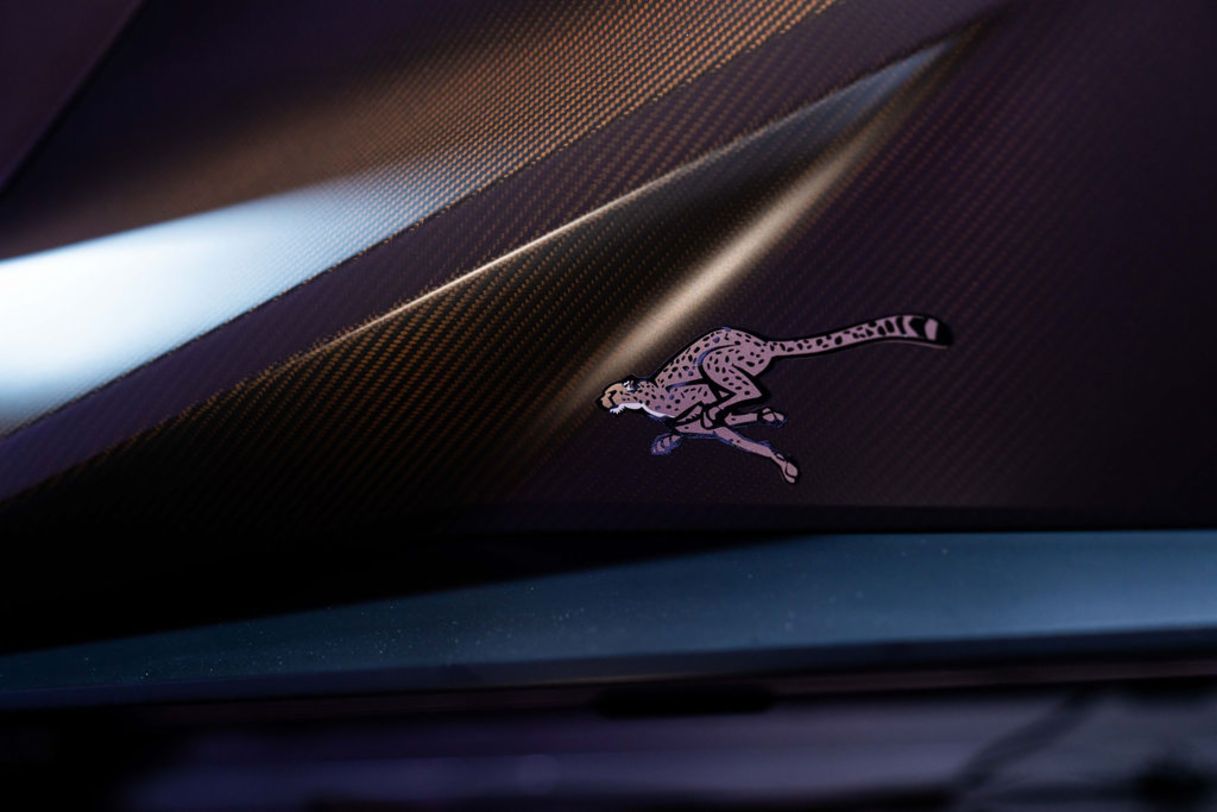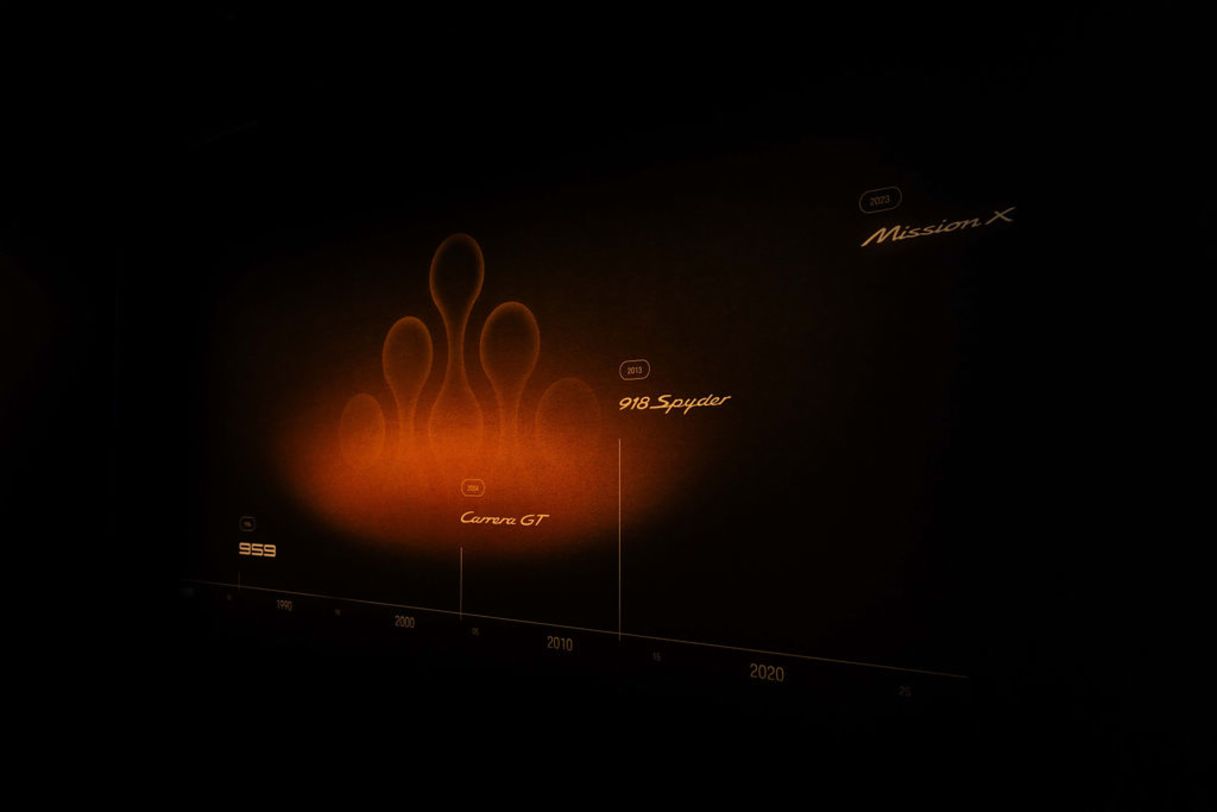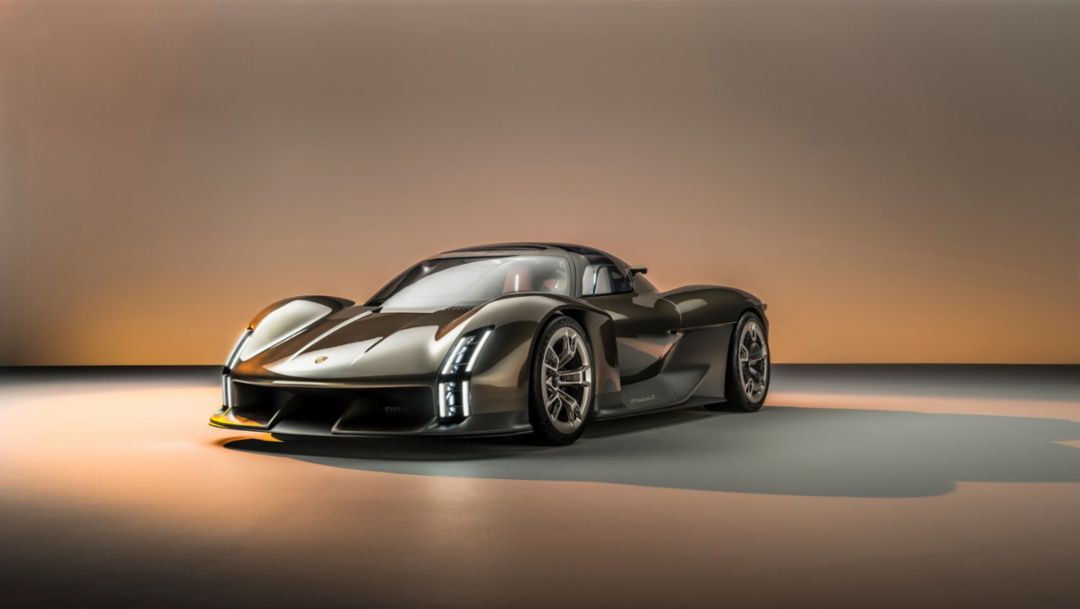Many motor racing fans at this year’s Formula 1® Rolex Australian Grand Prix might reasonably believe some of the fastest cutting-edge vehicle technology can be seen on the Albert Park racing circuit. But many of them are surprised to find the future of that technology is just nearby, away from the track.
Located within the circuit complex’s popular Fan Zone, next to the Porsche Paynter Dixon Carrera Cup paddock and the Porsche in Motion exhibition, is a box-like architectural building covered with an array of bright colours and an invitation to enter.
Just inside the doorway is the Porsche Hypercar Gallery. This darkened room is in the shape of an ‘X’ where three separate zones tell the stories of what many passionate sports car fans have often called the Porsche holy trinity.
The first area is dedicated to the famed Porsche 959, the car that created the Porsche hypercar legend. Just 292 road-going examples of this twin-turbo technology pioneer were produced, complete with motorsport-derived technologies and a new generation of advancements such as all-wheel drive.
Moving a on a little further and guests are greeted by the story of the Porsche Carrera GT. This two-seat hypercar is famed for its driving performance and the symphonic sound of its 5.7-litre V10 engine. Its lightweight design and advanced aerodynamics help it achieve remarkable performance figures.
Around the next corner is the story of the 918 Spyder, the third car in the Porsche hypercar story. Unveiled in 2014, this plug-in hybrid model series is powered by a high-performance 4.6-litre V8 engine and twin electric motors which can accelerate it from 0 – 100 km/h in only 2.6 seconds.
Then comes the surprise: Walking through a black curtain and into the final room reveals a treat to weaken any sports car aficionado: the all-electric Porsche Mission X concept.
“With this car, Porsche is showing the concept of an all-electric hypercar.” Michael Behr, Porsche Mission X Project Manager
Spectacular reinterpretation of a hypercar
The low and sleek Mission X concept car represents the pinnacle of performance and modern luxury and gives an innovative glimpse into the future. Its Le Mans-style doors open upwards to the front and it is powered by a high-performance, efficient electric powertrain.
“With this car, Porsche is showing the concept of an all-electric hypercar,” says Michael Behr, Project Manager of the Mission X, “Even though it is still a concept, it follows the Porsche 918 in the lineage of Porsche hypercars.”
Even without the spectacular lighting effects that surround it – which, like the entire exhibition space, were tailor-made in Australia – the car is breath-taking. Its aerodynamic body shapes are equal parts art and science. The lightweight glass dome and carbon-fibre reinforced plastic (CFRP) exoskeleton convey speed and strength. Its experimental paint finish, a colour named Rocket Metallic, has been specifically developed to alter how the colour and light work together on the car’s different shapes. It is currently the only Porsche to wear this newly developed paint.
As well as being the first car to be fitted with the modernised Porsche crest, the Mission X also showcases the evolution of the Porsche light signature. The headlights reinterpret the recognisable Porsche four-point graphic and the sculpted rear lights appear suspended.
Transparent aeroblades are used on the deep-dish wheels to optimise brake cooling, and the double spokes are relief milled, which combines lightweight construction and stability.
The interior concept is tailored to the driver, with a curved instrument cluster, an open-top steering wheel and carbon-fibre-reinforced plastic (CFRP) seat shells integrated in the monocoque.
The car’s 900-volt electric architecture includes a battery installed behind the two seats. This ‘e-core layout’ centres the vehicle’s mass like a mid-engined car, providing greater agility.
“We conducted a lot of simulations and tests to ensure the car generates a lot of aerodynamic downforce,” says Behr.
Fascinating details abound on the car’s exterior. They are as beautiful as they are functional. But one small visual detail summarises the car’s potential. Just ahead of the rear wheels is the motif of a small cheetah.
“We conducted a lot of simulations and tests to ensure the car generates a lot of aerodynamic downforce." Michael Behr, Porsche Mission X Project Manager
“It’s the world’s fastest land animal,” says Kai Leibrandt, Studio Engineer for Concept Cars at Porsche, a member of the small team that accompanied the Mission X to Australia for this special exhibition.
Porsche cars from the past played an important role in the creation of the Mission X concept car. The 917K racecar influenced the design of the doors and the sweeping line that rises from the low, flat nose to the rear wings. The Porsche 906 and 908 inspired the rectangular headlight clusters.
“This special opportunity to showcase the Mission X concept demonstrates the importance of Australia in the Porsche world,” says Daniel Schmollinger, CEO and Managing Director of Porsche Cars Australia. “The response from visitors has been overwhelmingly positive. The Mission X has been a fascinating discovery for so many visitors, and the ‘Meet the Maker’ sessions planned for Saturday and Sunday – when fans can have their questions answered by the team behind this car – are certain to be a hit.”
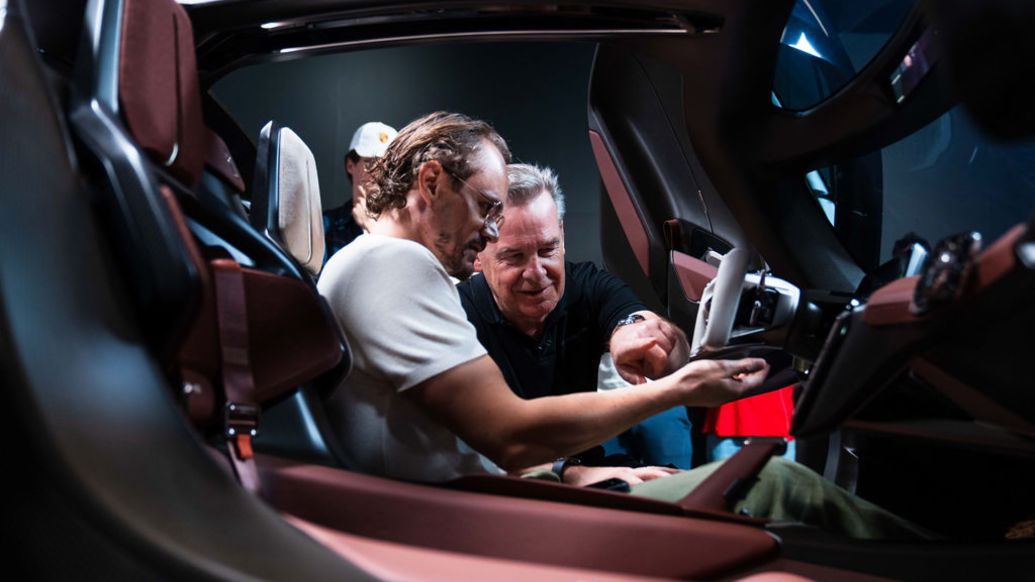
A vision of the future
The Mission X was unveiled to the world on 8 June 2023 to coincide with the same date in 1948 – 75 years earlier – when the Porsche 356 ‘No. 1’ became the first car to officially bear the name Porsche.
Should Porsche decide to send the Mission X into series production, the vision is clear:
- To create the fastest road-legal vehicle on the Nürburgring Nordschleife
- A power-to-weight ratio of roughly one PS per kilogram
- To deliver more downforce than the current 911 GT3 RS
- A charging speed roughly twice as fast as that of the Taycan Turbo S.
Images: Camber Collective
